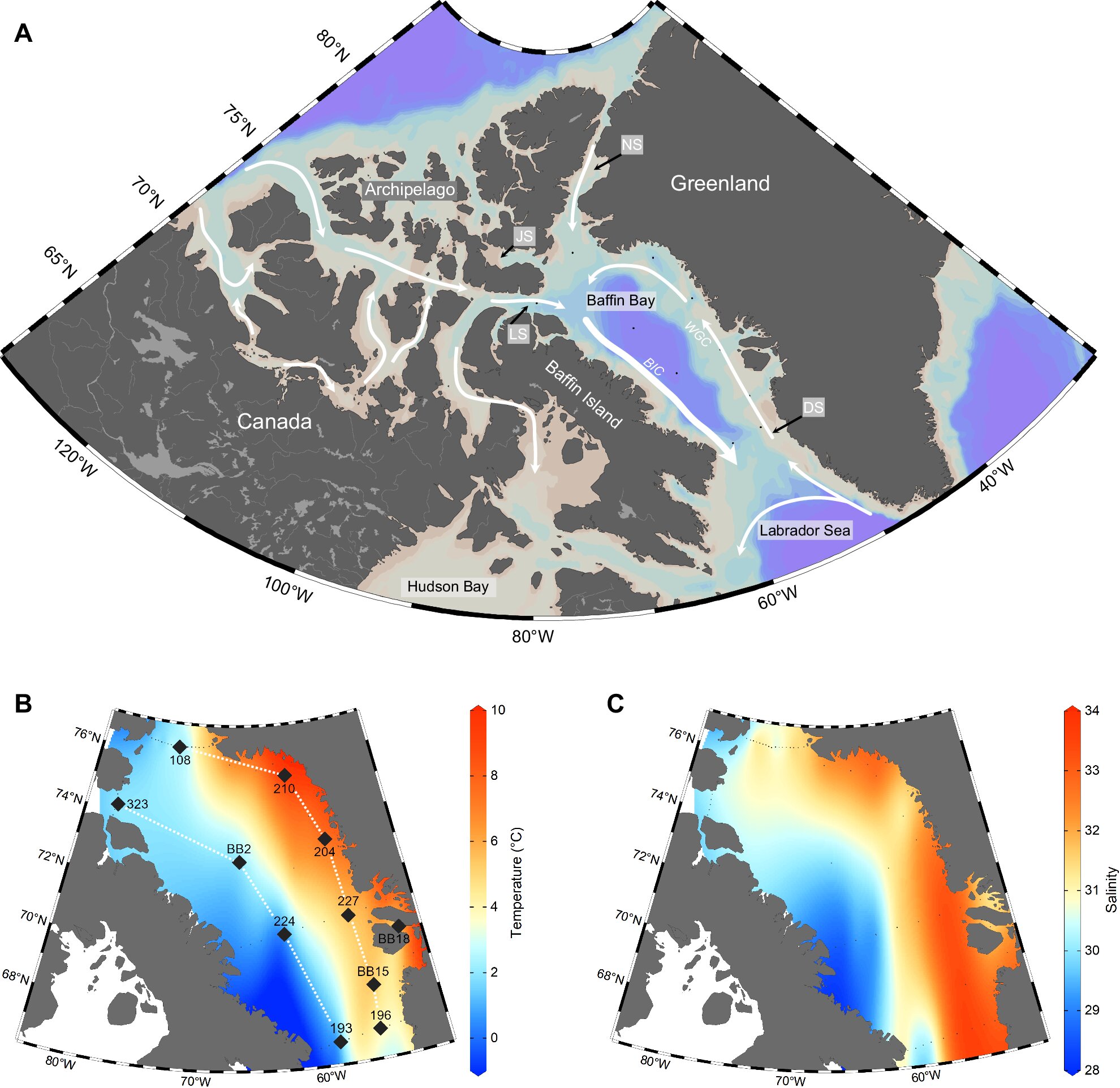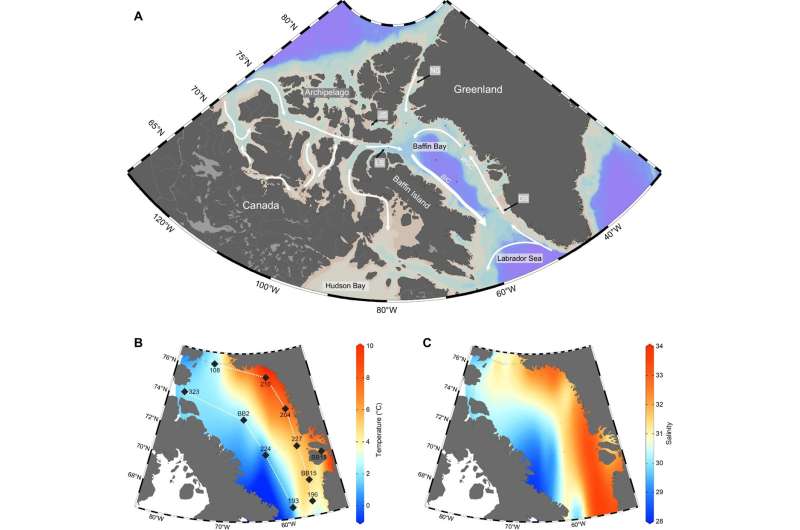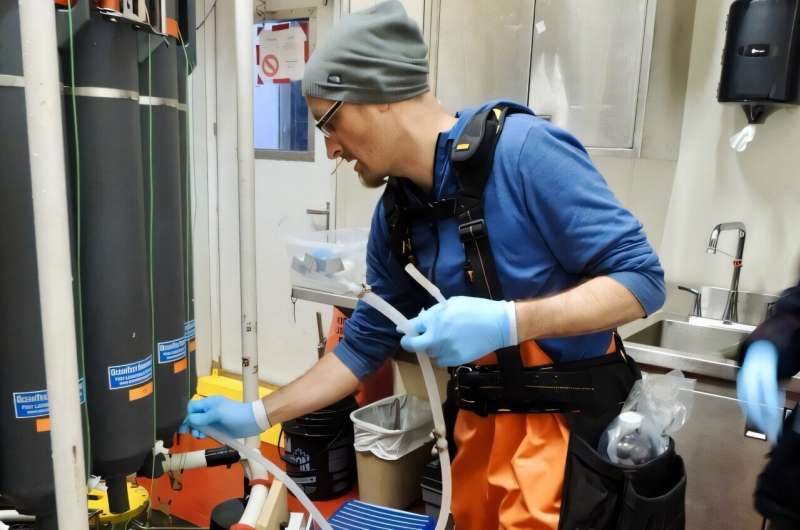

As the planet continues to warm and the ramifications of human-driven climate change continue to amplify, the need to find ways to mitigate climate change is growing. In Nature Communications, University of California, Irvine scientists describe a new technique that allows them to see how complex organic molecules made by marine bacteria can store climate-warming carbon in the deep ocean.
“It’s the first time we’ve measured this type of thing in the seawater,” said Brett Walker, an associate professor in the Department of Earth System Science and the senior author of the study. “Our new technique is great because you’re able to look at the composition of all organic molecules in seawater and see how they cycle.”
Walker and his team did fieldwork at Baffin Bay between Canada and Greenland. The team measured the concentrations of a class of molecules called carboxyl-rich alicyclic molecules (or CRAM) in seawater and discovered that certain kinds of organic molecules are preferentially stored in the deep ocean, whereas others cycle quickly to the surface.
“In the deep ocean, what we find is about one-quarter to half of the CRAM goes away, and the only way you can have that removal is biologically, by heterotrophic bacteria eating this material as an energy source,” said Walker.
“We used to think CRAM built up in the deep ocean. But if you look at the concentration data we produced for Baffin Bay, a completely different picture emerges, and we identify at least in Baffin Bay in this arctic region that there’s actually tons of CRAM being produced in the sunlit surface ocean that is later being removed at depth.”

Conversely, if half of the CRAM is unreactive and stored in the deep ocean, this may mean the bacteria can store planet-warming carbon derived from surface CO2 over very long time scales.
“That kind of changes our thinking about what we previously thought about how CRAM cycles,” said Walker. “If more CRAM can be stored in the deep ocean, presumably it would have the potential to mitigate atmospheric climate on centennial timescales.”
The next step is to find a way to manipulate bacteria into storing as much CRAM in the deep ocean as possible.
“The goal would be to explore if there’s a natural process by which you could enhance the natural production of these inert compounds at depth with native bacterial populations or something like that,” Walker said. “If you just enhance the rate of deep ocean storage a little bit, you could change the carbon storage dramatically over the course of a millennia.”
Walker and his colleagues plan to sort out whether or not the same biochemical process is at work in ocean waters around the world. “We plan to evaluate rates of production or loss of CRAM with deep water formation, and ocean circulation,” he said.
More information:
Kayla McKee et al, Cycling of labile and recalcitrant carboxyl-rich alicyclic molecules and carbohydrates in Baffin Bay, Nature Communications (2024). DOI: 10.1038/s41467-024-53132-5
Provided by
University of California, Irvine
Citation:
Scientists identify potential deep-ocean greenhouse gas storage solution (2024, October 18)
retrieved 18 October 2024
from https://phys.org/news/2024-10-scientists-potential-deep-ocean-greenhouse.html
This document is subject to copyright. Apart from any fair dealing for the purpose of private study or research, no
part may be reproduced without the written permission. The content is provided for information purposes only.